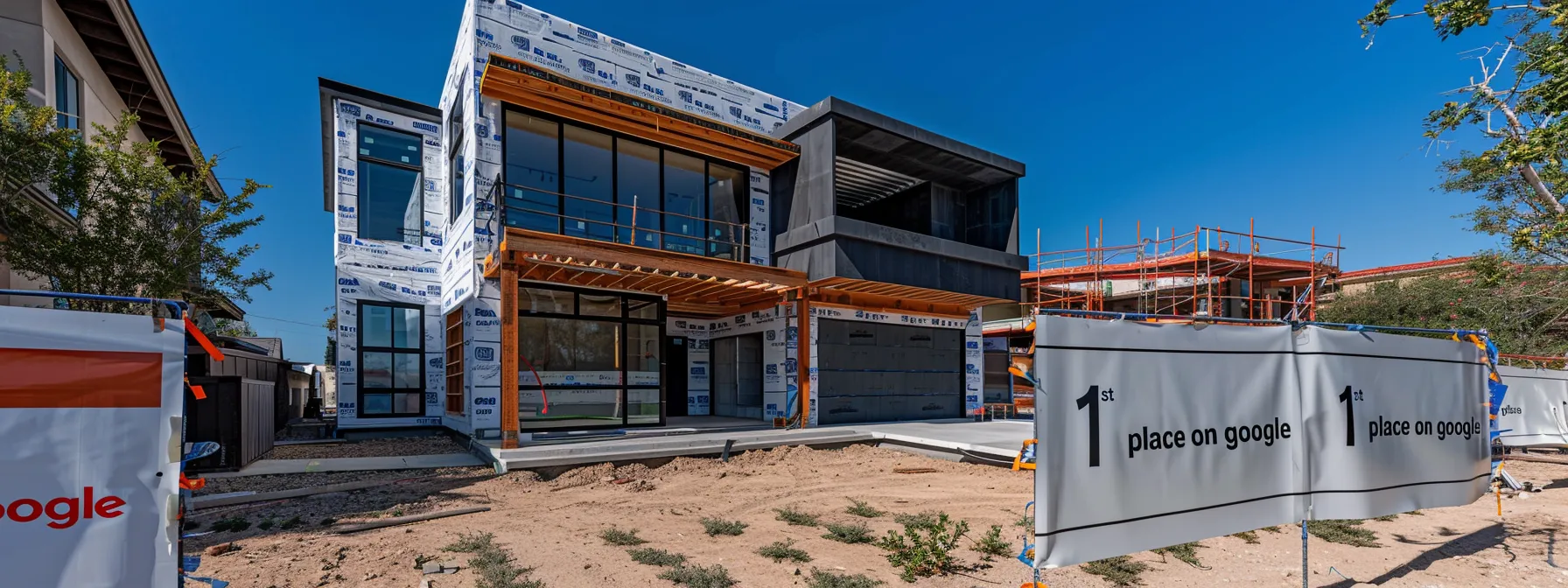Pay‑Per‑Click (PPC) advertising can be a game changer for home builders. While SEO and referrals are crucial, PPC allows you to reach people actively searching for new homes, custom builds, or builders in your area. The key is doing it right—targeting properly, using the correct keywords, optimizing landing pages, and tracking everything. This post will guide you through how to set up PPC so it delivers leads, not just clicks.
1. Define Your Goals & Key Metrics
- Set clear objectives, e.g. “Generate 30 qualified leads per month via PPC,” or “Get 15 model home tour bookings from Google Ads.”
- Identify key metrics to track: cost per lead (CPL), click‑through rate (CTR), conversion rate (from click to lead), lead‑to‑sale ratio, return on ad spend (ROAS).
- Decide what counts as a qualified lead in your process (budget, geography, buyer timeline, etc.).
2. Do Keyword & Audience Research
- High‑Intent Keywords: Use keywords people use when they’re looking to build or buy, e.g., “new home builder near me,” “custom home construction [City],” “energy‑efficient home builder.”
- Long‑Tail & Local Keywords: Longer phrases with location or style details often cost less and convert better.
- Negative Keywords: Filter out irrelevant traffic (DIY, learning, wrong locations, etc.) so you don’t waste budget.
- Audience Targeting: Target by geography (your service area), demographics (income, home type preference), interests; also retarget past site visitors.
3. Create Effective Ads & Landing Pages
- Ad Copy Tips
• Highlight what sets you apart: craftsmanship, design options, sustainability, custom features.
• Use strong call‑to‑actions (CTAs): Request a tour, get a quote, schedule a consultation.
• Use urgency or scarcity when appropriate (limited lots, special offers). - Landing Pages
• Align messaging between the ad and landing page (so users land on what they expect).
• Include strong visuals (finished homes, interiors) to inspire trust.
• Make the form simple but capture the essentials (name, contact, maybe a few preferences).
• Add trust elements: testimonials, past projects, awards or credentials.
• Optimize for mobile speed, clean layout, clear CTA.
4. Budgeting, Bidding & Ad Types
- Budget allocation: Decide how much you can spend monthly, and divide across campaign types (search ads, display/remarketing, maybe local ads).
- Bidding strategy: Use manual or smart bidding depending on your platform; bid higher for high intent keywords.
- Ad types to consider:
• Search (text) ads for capturing immediate buyer intent.
• Display or banner ads for awareness or retargeting.
• Local service ads if available in your region.
5. Geo‑Targeting & Scheduling
- Geo‑Targeting: Focus your ads in areas you build in or want to build in. Exclude areas you can’t serve. If certain neighborhoods or suburbs perform better (lower CPL, higher conversion), allocate more budget there.
- Ad Scheduling / Dayparting: Run ads more heavily during times when people are searching or likely to act (evenings? weekends?). Pause or reduce during low‑activity times if cost is high and conversion is low.
6. Tracking & Conversion Attribution
- Set up proper tracking so you know which clicks lead to real leads. Track form submissions, phone calls, chat interactions.
- Use CRM integration so you can follow the lead through to appointment or sale. That way you know which PPC campaigns are really driving business.
- Use unique tracking parameters, landing pages, or phone numbers to differentiate between different ads/campaigns to see what’s most effective.
7. Optimization & Continuous Improvement
- A/B Testing: Test variations of ad headlines, descriptions, visuals, CTA wording. Also test landing page layouts, form lengths.
- Monitor Search Terms: Look for new keyword opportunities; identify irrelevant or costly terms to exclude.
- Review Performance Regularly: Weekly or bi‑weekly check on metric performance; monthly deeper analysis to shift budget toward high‑ROI campaigns.
- Adjust Bids & Budget based on performance: increase bids on best keywords, pause underperformers, maybe trial new ad formats.
8. Common Mistakes to Avoid
- Sending traffic to your homepage rather than a dedicated landing page.
- Not using negative keywords (so you pay for irrelevant clicks).
- Slow follow‑up with leads—delay in contacting a lead weakens conversion chance.
- Poor mobile experience (slow page load, bad layout) which kills conversions.
- Forgetting local targeting—ignoring neighborhoods or service areas you want and including ones you can’t serve.
Conclusion & Action Steps
Using PPC is a powerful way for home builders to attract leads from people who are already searching for what you offer. If you implement it well—with the right keywords, compelling ads, skilful targeting, and strong measurement—you’ll see PPC become a consistent channel for lead generation.
Here’s your action plan:
- Choose one goal (e.g. “Generate 25 leads/month from PPC”) and define what counts as qualified.
- Build one pilot campaign using a small budget to test keyword sets, ad copy, and landing pages.
- Set up tracking (forms, calls, CRM) so you can measure everything.
- Review the data weekly; refine what works, drop what doesn’t.
Want me to build you a PPC campaign template (keyword list + ad copy + budget plan) customized for your market?










